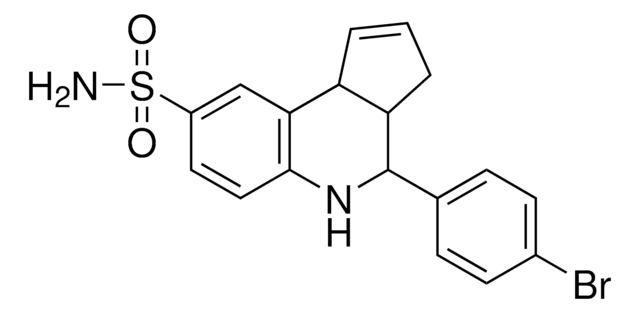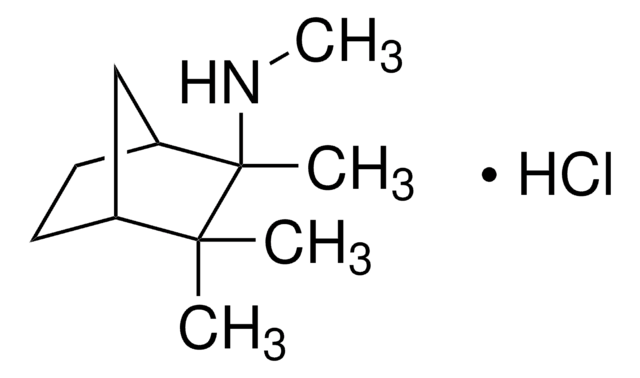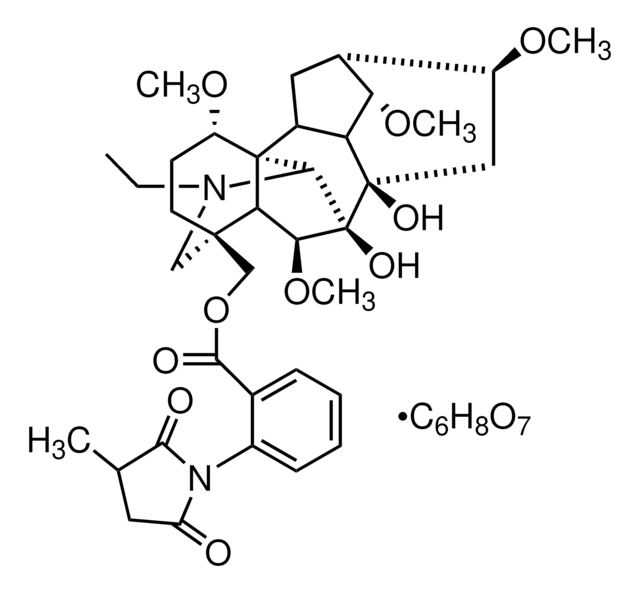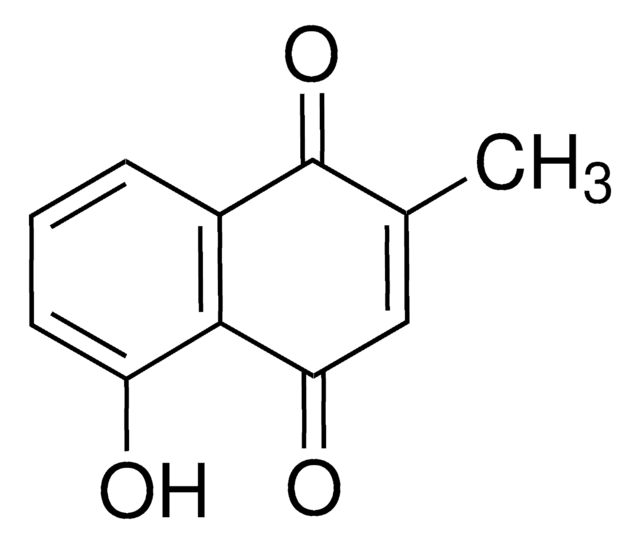추천 제품
Quality Level
분석
≥97% (HPLC)
형태
powder
색상
faintly yellow to dark yellow
solubility
H2O: >5 mg/mL
저장 온도
2-8°C
SMILES string
Cl.Cl.COc1ccc(\C=C2/CCCN=C2c3cccnc3)c(OC)c1
InChI
1S/C19H20N2O2.2ClH/c1-22-17-8-7-14(18(12-17)23-2)11-15-5-4-10-21-19(15)16-6-3-9-20-13-16;;/h3,6-9,11-13H,4-5,10H2,1-2H3;2*1H/b15-11+;;
InChI key
BXKYFUGAAFLYJL-BXGYHSFXSA-N
애플리케이션
GTS-21 has been used:
- as an α7 nicotinic acetylcholine receptors (nAChR) partial agonist to elucidate its anti-inflammatory effects in mouse macrophages
- to test its protective effect on the renal injury induced by lipopolysaccharide (LPS)
- to test its effect on microvascular inflammation in endotoxemia induced by LPS
생화학적/생리학적 작용
GTS-2, a derivative of anisine is an immunomodulatory drug. It is used for treating pancreatitis and septicemia. GTS-2 inhibits the pro-inflammatory cytokines especially the interleukin-6 (IL6) and tumor necrosis factor (TNF) in sepsis and endotoxemia.
GTS-21 is a selective agonist at α-7 nicotinic receptors with anti-inflammatory and cognition enhancing activities. GTS-21 has also been investigated for the treatment of schizophrenia.
특징 및 장점
This compound is featured on the Acetylcholine Receptors (Nicotinic) page of the Handbook of Receptor Classification and Signal Transduction. To browse other handbook pages, click here.
Storage Class Code
11 - Combustible Solids
WGK
WGK 3
Flash Point (°F)
Not applicable
Flash Point (°C)
Not applicable
시험 성적서(COA)
제품의 로트/배치 번호를 입력하여 시험 성적서(COA)을 검색하십시오. 로트 및 배치 번호는 제품 라벨에 있는 ‘로트’ 또는 ‘배치’라는 용어 뒤에서 찾을 수 있습니다.
Matthijs Kox et al.
Biochemical pharmacology, 78(7), 863-872 (2009-07-07)
The vagus nerve can limit inflammation via the alpha7 nicotinic acetylcholine receptor (alpha7nAChR). Selective pharmacological stimulation of the alpha7nAChR may have therapeutic potential for the treatment of inflammatory conditions. We determined the anti-inflammatory potential of GTS-21, an alpha7nAChR-selective partial agonist
W R Kem
Behavioural brain research, 113(1-2), 169-181 (2000-08-15)
A large decrease in brain nicotinic receptor levels occurs in Alzheimer's disease, relative to muscarinic and other receptors. Neurons possessing high affinity nicotinic receptors seem particularly vulnerable. The low affinity nicotinic receptors which selectively bind alpha-bungarotoxin are not significantly affected.
Bianca Brawek et al.
International journal of molecular sciences, 22(3) (2021-01-28)
Microglia, the innate immune cells of the brain, are commonly perceived as resident macrophages of the central nervous system (CNS). This definition, however, requires further specification, as under healthy homeostatic conditions, neither morphological nor functional properties of microglia mirror those
Ryan E Hibbs et al.
The EMBO journal, 28(19), 3040-3051 (2009-08-22)
The pentameric acetylcholine-binding protein (AChBP) is a soluble surrogate of the ligand binding domain of nicotinic acetylcholine receptors. Agonists bind within a nest of aromatic side chains contributed by loops C and F on opposing faces of each subunit interface.
Caijuan Shi et al.
Journal of molecular modeling, 19(2), 871-878 (2012-10-23)
Nicotinic acetylcholine receptors (nAChRs) are drug targets for neuronal disorders and diseases. Partial agonists for nAChRs are currently being developed as drugs for the treatment of neurological diseases for their relative safety originated from reduced excessive stimulation. In the current
자사의 과학자팀은 생명 과학, 재료 과학, 화학 합성, 크로마토그래피, 분석 및 기타 많은 영역을 포함한 모든 과학 분야에 경험이 있습니다..
고객지원팀으로 연락바랍니다.






